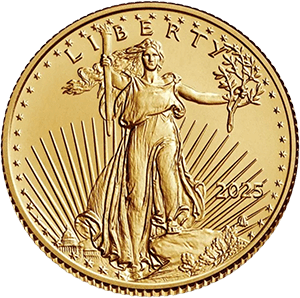
Gold’s first-ever move above $4,000/oz (Oct 8–9, 2025) was powered by a stack of forces hitting at once: rising safe-haven demand (geopolitics & U.S. shutdown risk), falling real-rate expectations as the Fed edges toward cuts, a weaker dollar, heavy central-bank purchases, and a return of ETF inflows—plus momentum/FOMO after technical breakouts. Those pillars haven’t disappeared, so another run to—or through—$4k is plausible, though short-term retracements are also likely.
What Actually Happened (with dates & numbers)
-
Milestone: Spot gold pushed through $4,000 for the first time on Oct 8, 2025, trading as high as ~$4,050; subsequent prints topped $4,059. U.S. futures also set records.
-
Context: The surge capped a ~50%+ YTD rally in 2025, following strong 2024 gains—one of the most powerful two-year advances since the late 1970s.
The Drivers Behind $4,000
-
Rate-cut expectations → lower real yields
As markets price in Fed easing, the opportunity cost of holding non-yielding gold falls. Real yields matter most for gold correlations; the market’s pivot toward cuts supported the breakout. -
Safe-haven demand (geopolitics + U.S. policy risk)
Ongoing conflicts, political instability abroad, and U.S. government shutdown concerns intensified demand for insurance-like assets. -
Softer U.S. dollar
A weakening dollar mechanically supports dollar-denominated gold and signals easier financial conditions ahead. -
Central-bank buying
Central banks continued diversifying reserves toward gold, a multi-year trend that underpins demand and shrinks available float. Recent bank research still expects robust official-sector purchases into 2026. -
ETF inflows return
After years of outflows, gold-backed ETFs saw material 2025 inflows (e.g., ~$64B globally YTD), adding a powerful capital channel on top of central banks and physical demand. -
Momentum & technicals (FOMO)
Multi-year breakouts invite trend-followers; “fear of missing out” amplified the thrust through round-number resistance at $4k.
Will Gold Hit $4,000 Again (or Go Higher)?
Base Case (Most Likely)
-
Range: $3,600–$4,200 over the next few months, with retests of $4k on macro headlines.
-
Why: The core supports (lower-rate path, persistent geopolitical risk, strong central-bank demand) remain intact. Pullbacks are probable as positioning gets crowded, but dips may be shallow if ETF/CB demand persists.
Bull Case
-
Catalysts: Faster-than-expected Fed cuts, renewed USD weakness, escalation of geopolitical shocks, or a surge in ETF/retail allocations.
-
Outcome: Sustained holds above $4,100–$4,200 and credible runs toward $4,500–$5,000 into 2026, in line with some bank scenarios.
Bear Case
-
Catalysts: Sticky disinflation with higher-for-longer real yields, rapid de-escalation of geopolitical risks, or ETF outflows.
-
Outcome: Mean-reversion toward $3,300–$3,500 until a new macro impulse appears. (Analysts note both gold and equities look momentum-extended and vulnerable to a corrective “air pocket.”)
Indicators to Watch (Practical Dashboard)
-
Real yields / Fed path: Fed statements, dot plot, 10y TIPS. (Easier policy = tailwind.)
-
Central-bank purchases: Monthly WGC/IMF updates; bank research revisions.
-
ETF flows: Daily/weekly changes in AUM and shares outstanding for major gold ETFs.
-
Geopolitics & U.S. fiscal headlines: Escalations, shutdown risks.
Risks & What Could Go Wrong
-
Upside risk: A left-tail geopolitical event or policy shock that accelerates safe-haven buying.
-
Downside risk: Surprise hawkish turn by the Fed lifting real yields; sharp USD rebound; profit-taking from crowded positioning.
What This Means for Investors & Advisors (Education, not advice)
-
Volatility is normal around big round numbers. Expect whipsaws near $4k as traders test liquidity.
-
Diversification logic holds. Gold’s low correlation and policy-hedge attributes didn’t require an equity selloff this time—both stocks and gold rallied, underscoring gold’s broader role beyond “only a crash hedge.”
-
Allocation discipline > headlines. Dollar-cost averaging, portfolio sizing, and a clear thesis (inflation hedge, policy hedge, geopolitical hedge, or diversification) help avoid chasing spikes. (General education based on cited conditions.)
FAQ
Why did gold rally while stocks also hit highs?
Different drivers can push both up: liquidity expectations (rate cuts), policy uncertainty, and structural demand for hard assets. Correlation isn’t fixed.
How important are central banks now?
Very. Ongoing official-sector buying provides a durable base of demand, making selloffs shallower than in past cycles.
Could gold reach $5,000?
Yes—if real yields fall further, the dollar weakens, and flows stay strong, street scenarios up to ~$4,900 by late 2026 exist.












